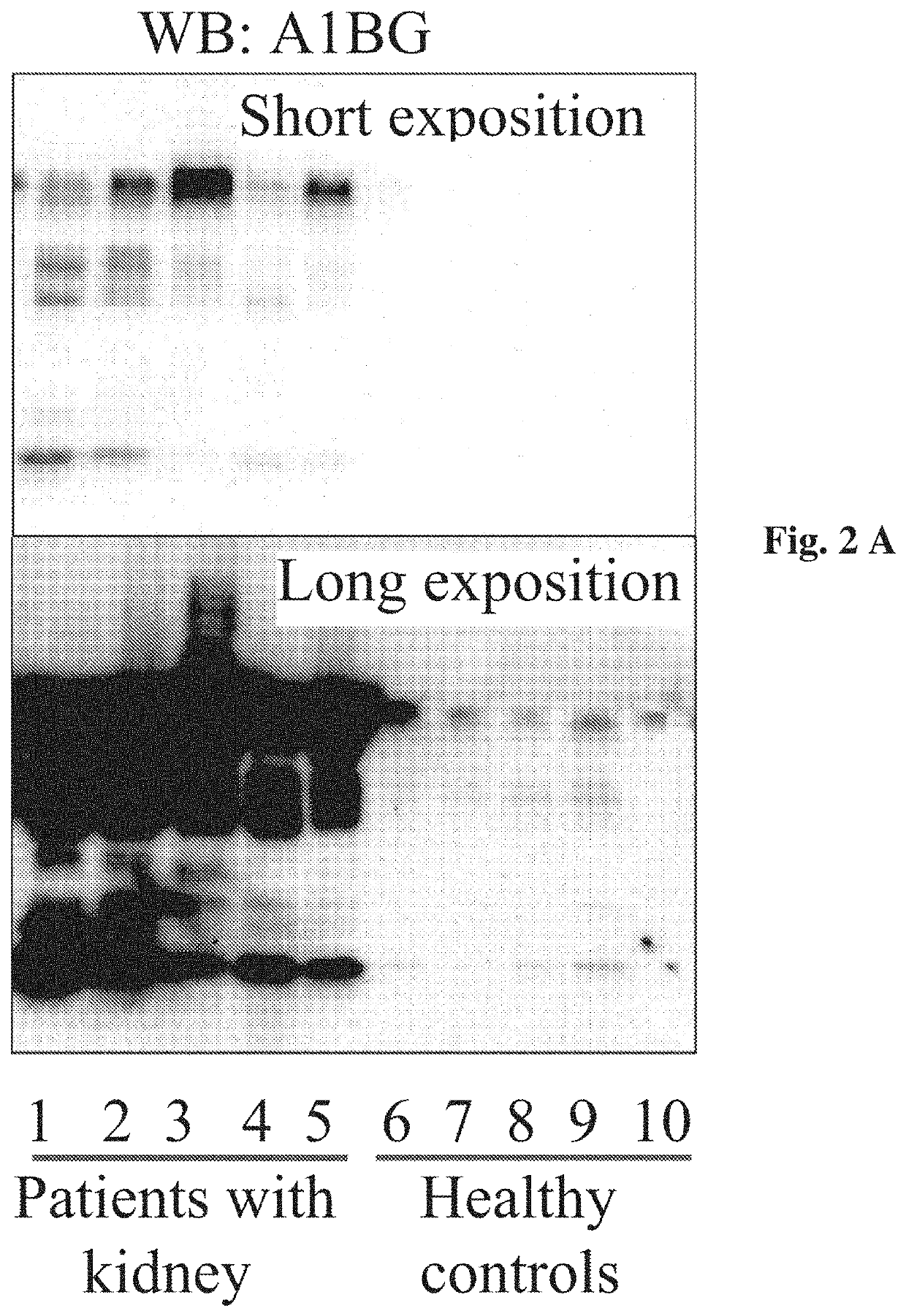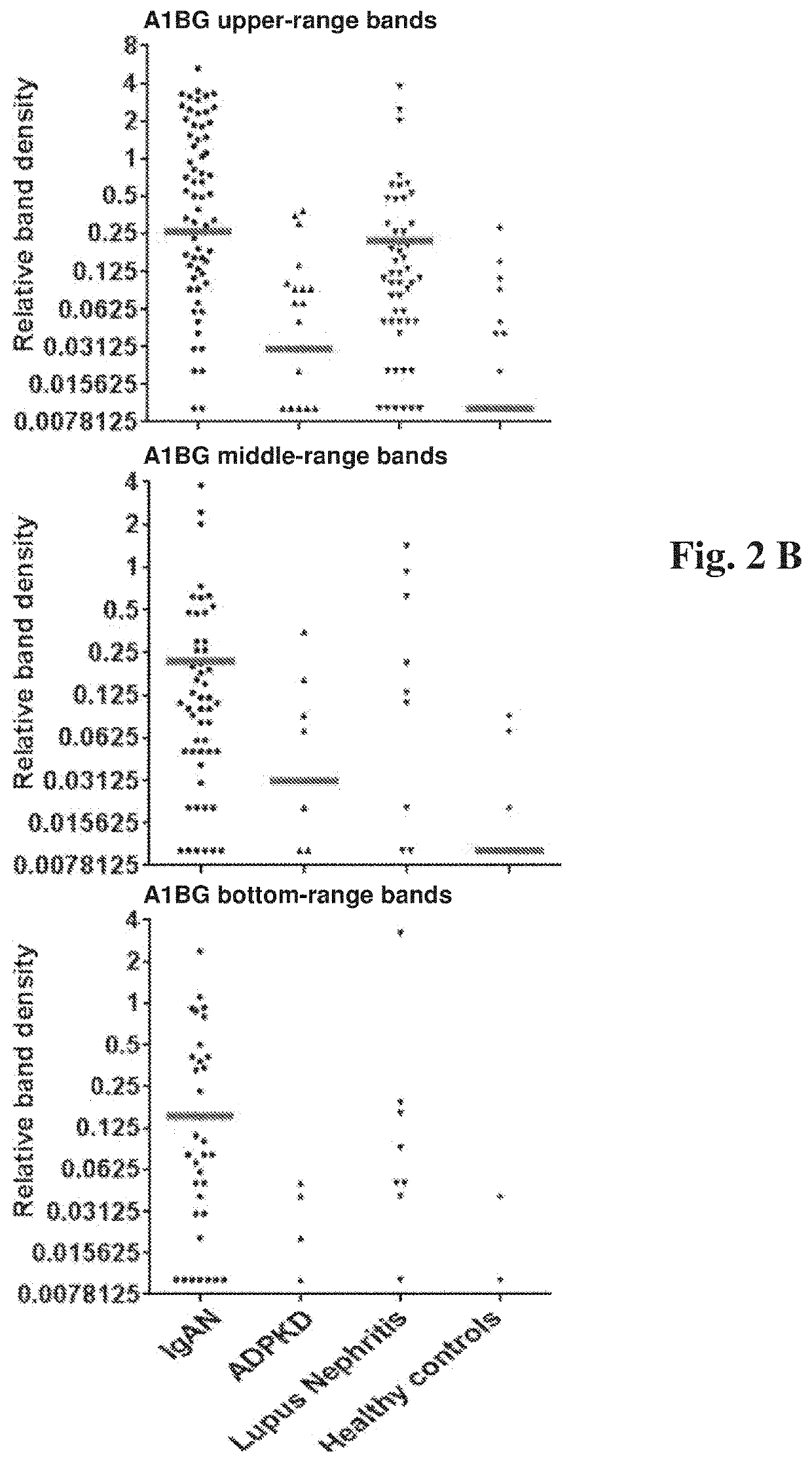Methods for diagnosis, differentiation and monitoring using urine proteins as markers in iga nephropathy
a technology of urine protein and nephropathy, which is applied in the field of diagnostic methods of iga nephropathy, can solve the problems of empirics, limited treatment options, and burden on society, and achieve the effects of rapid and ultrasensitive quantitative detection, rapid characterization of proteins, and improved sensitivity and sensitivity
- Summary
- Abstract
- Description
- Claims
- Application Information
AI Technical Summary
Benefits of technology
Problems solved by technology
Method used
Image
Examples
example 1
Discovery Phase
[0039]The methodological approach of the discovery phase has been described in Mucha et al. Below, the most pertinent information is listed.
Patients Characteristics
Groups of Patients
[0040]The study included 30 patients with IgAN and 30 healthy age- and sex-matched volunteers serving as controls. Demographic and clinical data of both groups are presented in Mucha, et al. (Supplementary material online, Table S1). Briefly, patients with biopsy-proven IgAN at different stages of chronic kidney disease (CKD) and older than 18 years were included. The inclusion criteria for the control group were as follows: age older than 18 years and absence of any kidney disease or other chronic diseases requiring treatment. The exclusion criteria for both groups included: active infection, history of malignancy, previous organ transplantation, or current pregnancy. To estimate GFR, we used the Chronic Kidney Disease Epidemiology Collaboration equations, which are the most accurate, hav...
example 2
Validation Phase
[0046]The primary difference between the discovery and validation phases is the transition from the assessment of the pooled urine samples (i.e. the discovery phase) to the individual evaluation of each protein in a given patient or a healthy person and a direct correlation of these results with the known clinical parameters in each case (i.e. the validation phase).
[0047]The study included 133 renal disease patients and 19 healthy controls. Renal disease included IgAN (77 cases), ADPKD (29) and LN (27).
[0048]Urinary samples were collected according to the protocol standardized in the Transplantation Institute, Medical University of Warsaw.
PUM
| Property | Measurement | Unit |
|---|---|---|
| weight | aaaaa | aaaaa |
| molecular weight | aaaaa | aaaaa |
| molecular weight | aaaaa | aaaaa |
Abstract
Description
Claims
Application Information
 Login to View More
Login to View More - R&D
- Intellectual Property
- Life Sciences
- Materials
- Tech Scout
- Unparalleled Data Quality
- Higher Quality Content
- 60% Fewer Hallucinations
Browse by: Latest US Patents, China's latest patents, Technical Efficacy Thesaurus, Application Domain, Technology Topic, Popular Technical Reports.
© 2025 PatSnap. All rights reserved.Legal|Privacy policy|Modern Slavery Act Transparency Statement|Sitemap|About US| Contact US: help@patsnap.com



